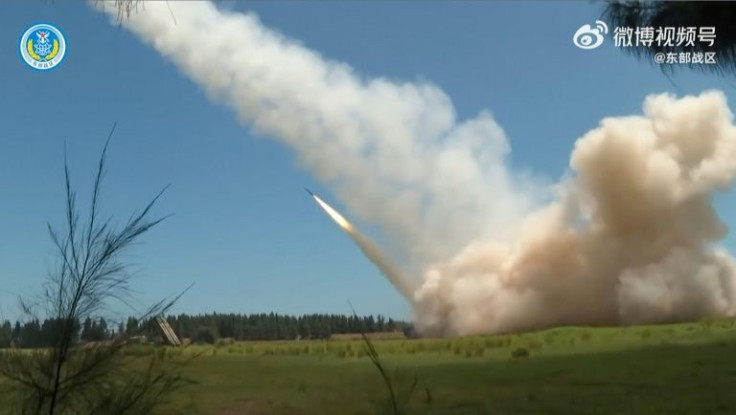Xi Jinping Personally Made The Decision To Fire Missiles Into Japan's EEZ During PLA Drills: Report
KEY POINTS
- The new zone was added during the early hours of Aug. 4, hours before the start of the drill
- Five missiles were fired into Japan's EEZ - four from Fujian province and one from Zhejiang
- Japan believes the missile from Zhejiang is a threat to the Nansei Islands where its troops are stationed
The final decision to fire ballistic missiles into Japan's Exclusive Economic Zone (EEZ), during the Chinese drills following House Speaker Nancy Pelosi's visit to Taiwan, came directly from Chinese President Xi Jinping. However, there was some "hesitation" within the Central Military Commission and the People's Liberation Army (PLA) over whether or not to fire the missiles into Japan's EEZ, a report claimed.
The last-minute inclusion of a seventh zone, hours before the drill was to take place, hinted at this indecision, said an analytical piece penned by Katsuji Nakazawa, a senior journalist with Tokyo-based media Nikkei Asia.
According to Nakazawa, soon after Pelosi's plane landed at Taipei's Songshan Airport, the PLA announced the six zones around Taiwan where the drills were to begin at noon on Aug. 4. One of the designated zones was an area east of Taiwan, partially overlapping with Japan's EEZ.
However, Chinese authorities "somewhat oddly" added a new zone during the early hours of Aug. 4. "The new zone partially overlapped with the area east of Taiwan announced on Aug. 2. Yet, it was moved closer to the main island of Taiwan -- and most crucially -- avoided Japan's EEZ," the report said.
Taiwanese authorities too were aware of the new zone and advised vessels to avoid the area. Some sections of Chinese media too reported on the seventh zone.
The new zone was "less provocative," and firing missiles at the area wouldn't have been viewed as direct intimidation of Japan. Nakazawa, a senior journalist, added that the Central Military Commission included this "milder option" as it was aware of the seriousness of the matter.
Just hours after the drills began on Aug. 4, five missiles launched by China fell within Japan's EEZ southwest of Hateruma Island. Japan claimed four of these five missiles were fired from along the coast of Fujian province and flew far above Taipei before landing within Japan's EEZ, thereby threatening both Taiwan and Japan.
The last one was fired from along the coast of Zhejiang province and traveled around 650 km. It landed within Japan's EEZ without flying over Taiwan. It is this last missile that Tokyo viewed as a "direct intimidation" against the Nansei Islands where Japanese military troops and radar are stationed.
The Nikkei Asia analysis added that none of the missiles landed in the seventh zone, which meant that though there was an option to avoid Japan's EEZ, Xi did not choose that option.
"If only one missile had landed within Japan's EEZ, China would have been able to say it happened "by chance." But the landing of five missiles within Japan's EEZ shows that China had a clear intention to send a hard-line message to Japan," Nakazawa said in his report. Though China does not recognize the Japanese EEZ, the PLA actions were nothing but a "blatant provocation."
The author added that the Chinese foreign ministry, ironically, was unaware of this event, going by Chinese Foreign Minister Wang Yi's response to the news during the ASEAN foreign ministers in Cambodia. However, Wang's team later toughened its stance by abruptly calling off a planned meeting between Japanese and Chinese foreign ministers.
According to Nakazawa, part of Xi's motivation to flex China's muscles was to prove he is different from past leaders Deng Xiaoping, Jiang Zemin and Hu Jintao.

© Copyright IBTimes 2025. All rights reserved.





















